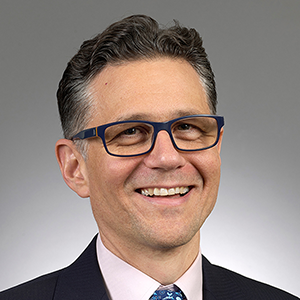February 3, 2023
7 min read
This article originally appeared in the February edition of Private Equity International
Dedicated ESG strategies continue to proliferate as mainstream managers adopt best practices to maximise value, say Natasha Buckley, Till Burges and Michael Dean at HarbourVest Partners
Q How would you describe the evolution in ESG focused strategies that you have seen in recent years?
Natasha Buckley: Investors are looking to ESG- and impact-focused strategies to achieve their own objectives, whether that is actively contributing to frameworks such as the UN Sustainable Development Goals or net zero, or for broader objectives related to investor purpose.
Conversations have moved on from whether these strategies are about sacrificing returns, to how investors can most effectively select strategies that meet asset allocation targets alongside specific impact objectives. There are a wealth of solutions in the market that have anticipated these investor preferences and acted accordingly. I believe there is a recognition that private markets are particularly well-positioned to offer more nuanced and targeted solutions for positive impact.
Q What is the delineation between impact and ESG?
Till Burges: The definition of impact involves the intent to deliver positive social or environmental outcomes, as well as the ability to measure that progress. There are also what we call ESG-integrated funds. These are funds that have the tools available to incorporate ESG considerations into investment evaluation or the value-creation phase, but without the intent and emphasis on measurement that defines an impact solution.
Q Are investors looking for impact funds to meet targeted objectives?
NB: We put this question to our clients when we were carrying out research into this area at the end of 2021, asking whether it was necessary for them to achieve their ESG objectives through an impact manager lens. Interestingly, the majority said it wasn’t a dealbreaker for their allocation decisions.
There are investors that are looking for fund structures that report against predefined environmental and social goals and report against measurable impact – that requires a dedicated strategy and expertise. The biggest evolution we have seen on the supply side has involved the development of impact at scale, with many of the biggest private equity houses establishing dedicated impact teams. Other investors are less concerned about fund processes and are more focused on creating sectoral exposure to high-growth sustainability trends, such as health and wellness.
Q What types of ESG and impact strategies are proving particularly popular?
Michael Dean: Historically, the areas that have proved most popular have involved renewable energy power generation involving solar or wind assets. This is a sector that has seen significant growth because of the large capital need, the important role for private markets, and subsidies and incentives from governments that help to de-risk investments. More recently, we have seen growth in newer and more potentially disruptive areas such as battery storage and now hydrogen. In addition, we are seeing an increased focus on energy efficiency, with the decarbonisation of traditional sectors.
Q How are managers differentiating themselves within this broad energy transition space?
TB: On the private equity side, we are seeing a proliferation of strategies touching environmental or social investment themes across the venture capital, growth and buyout industries. The opportunity set is also global. This is a real departure from just a few years ago, where it was very much Europe leading the field.
Meanwhile, the range of investment themes is enormous. There are buyout managers that are making existing industries more sustainable by removing certain toxic materials, lowering energy consumption and carbon emissions, changing production processes, or tweaking the product offering, for example. There are also managers investing in the renewable energy generation supply chain, targeting software and services solutions. In addition, there are growth and VC managers tackling the next generation of challenges with technologies supporting carbon capture and sustainable farming, for example.
Against this backdrop, we can put together solutions that fit the ambitions of individual clients and their stakeholders. When it comes to selecting funds, what we are always looking for is a strong investment track record and the ability to showcase access to the types of opportunities that investors have been promised.
MD: We are increasingly seeing managers hiring operators with industry backgrounds, rather than just financial professionals. Some firms are also seeking to differentiate themselves with their platforms. There are GPs out there that have historically invested in traditional energy infrastructure, for example. The off-takers for renewable energy power purchase agreements are often the same people these firms have been working with for years. They have the relationships and they know how these markets function. There are around 100 dedicated renewable energy infrastructure strategies raising capital today, so differentiation based on the ability to leverage platforms and experience in one market and apply it to another can be compelling.
NB: Fundamentally, managers can differentiate on the ‘E’ of ESG by demonstrating they understand both the risks and opportunities that the energy transition represents. What are they doing to decarbonise now and, more importantly, how are they turning that into a value proposition for investors?
Q What about the ‘S’ in ESG? Are investors focused on socially oriented strategies?
TB: Around 50 percent of the more than 250 impact funds that we are tracking are focused on the ‘E’; a further 25 percent incorporate aspects of both the ‘E’ and the ‘S’; and the final 25 percent are more weighted towards social objectives. When we talk to investors about their sustainability agendas, we often find they are open to investments that target both people and the planet.
Q How is the regulatory backdrop impacting the evolution of an impact- and ESG-focused ecosystem within private markets?
NB: Regulation has been positioned as an opportunity to promote ESG strategies more appropriately because, of course, greenwashing is a real issue that needs addressing. However, when regulation is introduced without clear, asset-class-specific guidance it creates confusion and a compliance burden, and can have a chilling effect on the market.
There is also an issue with proliferation. Two years into the EU Sustainable Finance Disclosure Regulation regime, the UK Financial Conduct Authority is currently consulting on sustainability investment labels for funds.
Furthermore, we are also facing proposed amendments by the US Securities and Exchange Commission, which plans to introduce its own ESG categorisation and disclosure requirements. These are all positive developments in themselves. But navigating the different regimes presents a potentially enormous compliance burden. There is therefore a growing call for interoperability between regulatory regimes under globally accepted standards.
Q How significant a role with ESG-integrated and impact funds play in the broader private markets universe?
TB: The growth of impact funds that has already taken place has been tremendous. In just a few short years, we have already seen more than 250 self-proclaimed impact funds being launched, representing between $70 billion and $80 billion of assets. As the industry continues to mature, producing more exits, sharing more best practices, and creating greater consistency around how KPIs are calculated and communicated, it will continue to go from strength to strength.
At the same time, private markets asset managers more broadly are increasingly adopting features of impact and ESG investing because they recognise that it ultimately helps to create valuable companies. This is a very encouraging trend for the industry and for society more broadly.

Q How does your due diligence of ESG and impact credentials work in practice and how challenging is it to compare managers in these respects?
NB: Our ESG scorecard evaluates managers based on their ESG programmes, policies, and the integration of ESG into the investment process. We also look at managers’ ability to execute on their ESG commitments, in terms of resource and training, as well as ESG reporting and transparency. That manager evaluation is based on industry standards. We think it is important to have a consistent way of asking questions, while applying a proprietary methodology for analysing responses and generating ratings for GPs.
Our ESG analysis is integrated into broader due diligence materials presented to the investment committee because we view a sophisticated approach to ESG as a proxy for manager excellence. However, it can be challenging to compare portfolio level ESG data without meaningful context or benchmarking. We access that insight through close monitoring of our GPs and through our role on limited partner advisory committees. This allows us to gain an understanding of specific portfolio companies and how they are applying ESG processes.
MD: Within energy and infrastructure in particular, there has been clear progress when it comes to measuring Scope 1 and 2 emissions and emissions avoidance. However, we have not yet reached the point where we can readily come up with a number and rank managers by quartile. There is still an element of applying judgement based on a manager’s processes and how robust those are, and then combining that with the data provided by the GP and data we can generate ourselves.
TB: When it comes to impact managers, meanwhile, there is an additional layer of due diligence that is applied on top of broader ESG. That framework allows us to analyse how an impact strategy is applied in practice, how the firm culture reflects these values and how impact measurement takes place. We seek to identify best practices within impact and then get a sense of where a particular manager sits on that spectrum.
At the same time, private markets asset managers more broadly are increasingly adopting features of impact and ESG investing because they recognise that it ultimately helps to create valuable companies. This is a very encouraging trend for the industry and for society more broadly.
This article was sponsored by HarbourVest Partners for Private Equity International. It is solely for informational purposes and should not be viewed as a current or past recommendation or an offer to sell or the solicitation to buy securities or adopt any investment strategy. The opinions expressed herein represent the current, good faith views of the author(s) at the time of publication, are not definitive investment advice, and should not be relied upon as such. This material has been developed internally and/or obtained from sources believed to be reliable; however, HarbourVest does not guarantee the accuracy, adequacy or completeness of such information. There is no assurance that any events or projections will occur, and outcomes may be significantly different than the opinions shown here. This information, including any projections concerning financial market performance, is based on current market conditions, which will fluctuate and may be superseded by subsequent market events or for other reasons.
More from HarbourVest
Insights

What is Venture? An Interstellar Journey Toward a New Definition




